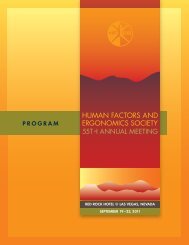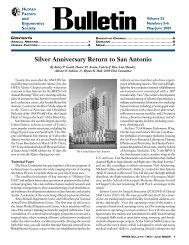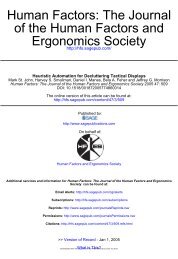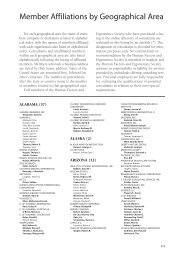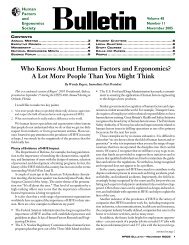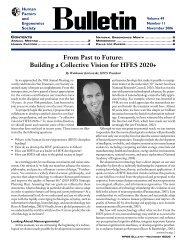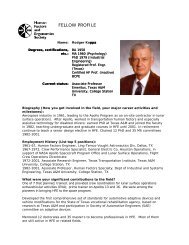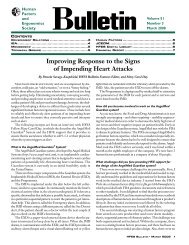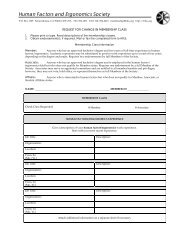Next Generation Air Transportation System Integrated Plan
Next Generation Air Transportation System Integrated Plan
Next Generation Air Transportation System Integrated Plan
Create successful ePaper yourself
Turn your PDF publications into a flip-book with our unique Google optimized e-Paper software.
Three factors threaten the ability of aviation to grow and continue<br />
to serve the nation:<br />
1.1 Security<br />
We must continue to squarely and aggressively face terrorism.<br />
Following 9/11, the government acted swiftly and firmly to protect<br />
us from aviation terrorism. Additional steps were taken to strengthen<br />
all parts of aviation security<br />
and our military was called<br />
upon to perform the new<br />
and difficult job of domestic<br />
air patrol. Americans<br />
understand and support the<br />
new security requirements.<br />
However, such actions cost<br />
more than $4 billion per<br />
year, and employ tens of<br />
thousands of our nation’s security personnel at a time when many<br />
other threats are also in need of attention. The flying public has also<br />
spent its precious time to support improved security throughout the<br />
airports. We need to find ways to secure aviation without detracting<br />
from the affordability, speed, and predictable advantages we desire<br />
in air transportation. Key factors in this problem include the<br />
projected growth of 120 million additional international passengers<br />
that will have to clear customs and security, the tripling of cargo<br />
and passengers, the introduction of new types of vehicles, and new<br />
potential threats. 2 Aviation security will require the coordination<br />
of missions for national defense, homeland security, drug and<br />
law enforcement, and air traffic management. Gaps must be<br />
closed immediately to confront an ever-widening range of threats.<br />
Efficiencies must be found to enable the anticipated growth in air<br />
commerce.<br />
1.2 Gridlock<br />
Paradoxically, aviation’s own success will erode the unique speed,<br />
predictability, and affordability benefits of air travel if the air<br />
transportation system does not expand and adapt at the same<br />
pace as the market demands. Historically, growth in aviation was<br />
possible because significant investments were made to expand the<br />
national airport system and because of our ability to incorporate<br />
productivity enhancing technologies into the system. Today, in the<br />
most densely populated areas of the U.S., we are barely keeping<br />
pace with demand. In the year 2000, millions of Americans were<br />
stranded in airports experiencing delays of more than an hour and,<br />
in rare cases, to six hours or more. Using present forecasts and<br />
maintaining aggressive plans for improvements, the Federal Aviation<br />
Administration (FAA) predicts that even more major airports will be<br />
congested in the 2020 time frame 3 (see Figure 1). Failure to address<br />
the impact of air travel congestion on the mobility of Americans<br />
could cost consumers up to $20 billion a year by 2025. 4<br />
Figure 1. Congestion Continues to Build<br />
2 Federal Aviation Administration, Aerospace Forecast, Fiscal Years 2004-2015, March 2004<br />
3 Federal Aviation Administration, Future <strong>Air</strong>port Capacity Task – Final Report, June 2004.<br />
4 Cavolowsky, John, and Lee Olsen, Socio-Economic Demand Forecast Study, NASA and FAA, January 2004.<br />
Joint <strong>Plan</strong>ning & Development Office 03



